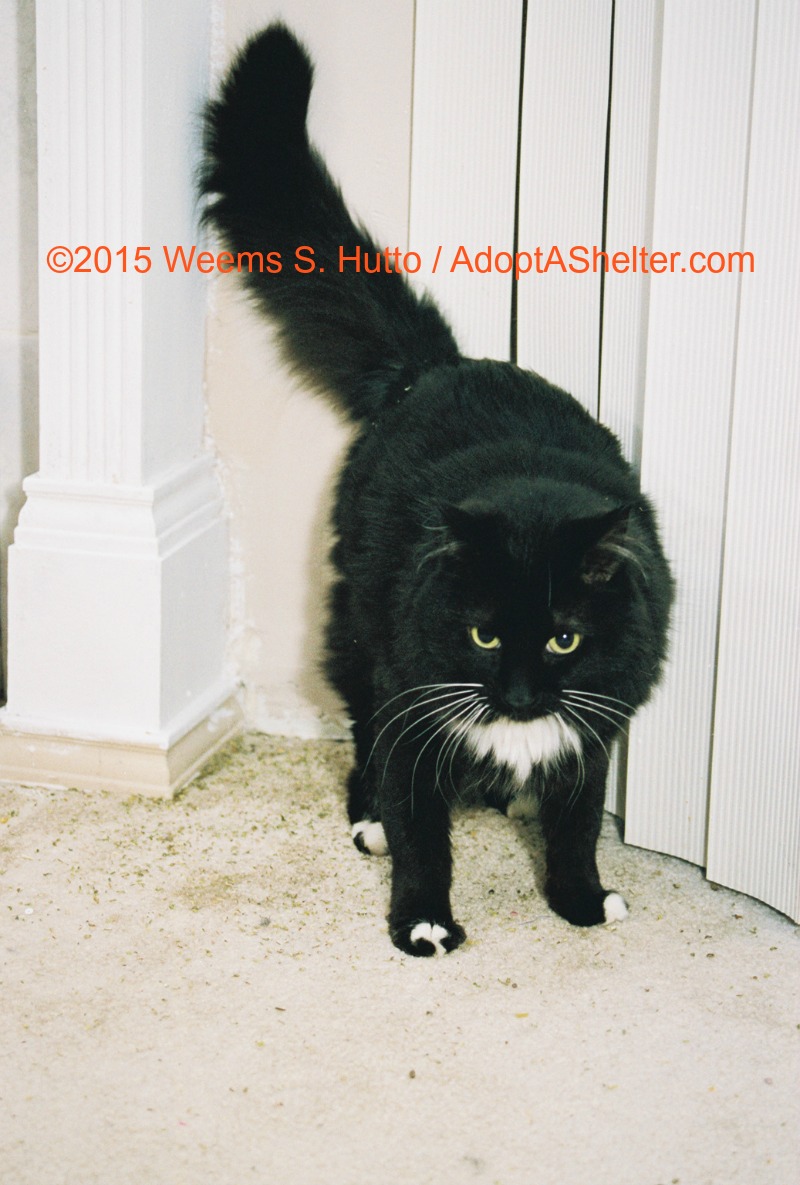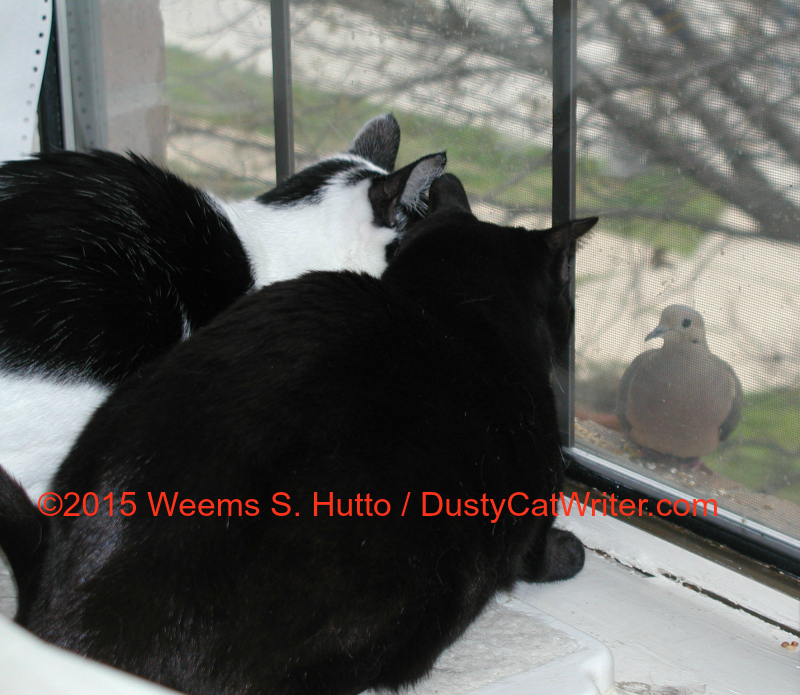
IS YOUR CAT STRESSED?
Stress in cats or other animals is the organism’s response to any demand. When faced with a fight-or-flight emergency, the body releases nerve chemicals and hormones that quicken the pulse and respiration, cause the muscles tense, to help the animal face the threat or run away. All of these functions help improve the chance of survival. But these same chemicals released over a prolonged period may lead to health problems. In humans chronic stress can cause heart disease, high blood pressure, diabetes, depression, and other illnesses. It may also lead to suicidal thoughts, or alcohol or drug abuse. Long term stress in cats can suppress the immune system and cause the same health issues, sans suicide and drugs.
Cats don’t make it easy for their humans to help them. As a survival strategy, they hide their anxiety and fears as well as symptoms of illness and injury. Some signs of stress are subtle and difficult to detect. And even when they’re detected, it’s hard to determine whether it’s stress and symptoms of illness. If your kitty’s habits or behavior suddenly changes in any way, take him to the vet to rule out any underlying medical causes.

Signs of stress in cats include:
- Urine marking /Peeing or pooping outside the litter box is the cat’s version of an SOS, the universal code for ‘send help.’ Don’t yell at him or discipline him. That will just add to his stress and exacerbate his fear. Inappropriate elimination is often the first symptom of illness.’
- Defensive or redirected aggression towards people or other pets.
- Change in appetite (eating more, loss of appetite or not eating at all). Go to the vet now! Both anorexia and overeating could be due to either stress or an underlying medical condition.
- Change in grooming habits. (Excessive grooming which may cause bald spots, or under grooming resulting matted or soiled fur.
- Isolation. Hiding is common sign of stress or pain. Go to your veterinarian if you notice your cat spending less time with family than usual or no long hangs out with other pets.
- Excessive Scratching/furniture scratching.
- Change in activity level. Suddenly quiet or lethargic or extreme vigilance with a heightened startle response when he startles at the slightest noise.

So what does your cat have to be stressed about?
After all he doesn’t have to worry about his dinner or being eaten by predators. He just lies around all day and dines whenever he wants.
Well, you can take the cat out of the wilderness, but you can’t take the wilderness out of the cat. Even inside your home, he’s still worried about falling prey to larger predators and protecting his personal territory. In your cat’s mind, he’s still responsible for his own survival. Cats are creatures of habit. Any change in his life or surroundings generates stress. Despite your safe walls, he’s constantly accessing risk and looking for danger. Any change in his environment could indicate a threat. Also because feline senses are much more sensitive than human, sounds, smells and textures that we find pleasing may be overwhelming to him.
Sources of stress in cats could be:
- Litter box issues. Unscooped or dirty litter box, scented litter, a new brand of different litter, a covered box, a different location, laundry room noise or another pet or child interfering with using box.
- Food. Switch cat food brand or flavor, not enough bowls, dishes clustered in one area or food dishes located near litter box. Another cat guarding food.
- Change in family. Arrival of new baby, pet or spouse, death or divorce or death of another pet, or moving to a new home.
- Family conflict. Fighting between family members, child or animal abuse, cat bullied by kids or other pets.
- Home remodeling. New carpet, rearranged or new furniture, construction, painting, or home repairs
- Loud music or noise.
- Not enough territory. No place to hide or elevated spots to escape to.
- Stray or wild animals in the yard.
- Schedule disruption. New job and work hours, house guests arrive or you leave town.
- Illness or injury.

Reducing Your Cat’s Stress
- Exercise. National Institute of Mental Health recommends that people exercise (just 30 minutes per day) to boost mood and reduce stress. It also recommended scheduling regular times for healthy and relaxing activities. What’s good for you is also good for your kitty. Just two 10-minute bouts a day of Chase the Feather Toy can release serotonin and reduce your cat’s stress.
- Make sure there are plenty of resources (food and water bowls, litter boxes, scratching posts and toys) and they are distributed throughout the house rather than one centralized one location. One litter box for each cat (plus one) also set up in several locations.
- Provide plenty of territory. hidey holes, elevated shelves, window perches and cat trees and so he can escape unwanted attention from kids or dogs.
- Use a Comfort Zone® with Feliway® diffuser. This is a stress-relieving synthetic facial pheromone promotes a feeling of well-being and helps reduce stress-related behaviors such as urine marking, vertical scratching and aggression.
- Sentry® Calming Collar for Cats. This is a synthetic pheromone that mimicks pheromones given off by the lactating mother cat and help reduce unwanted stress-related behaviors.
- Boredom breeds stress, so create a challenging environment with food puzzles, cat toys, cat grass, high up hang outs, hidey holes, cat videos and window perches with a front row seat to bird feeder action.
- Keep changes to a minimum. If you must change his food or litter, do it gradually.
Disclaimer: This article is for informational purposes only. It is not intended to diagnose or to provide veterinary treatment for your pet. All information is for educational and support purposes only and is not intended to diagnose or treat. It is not intended to be a substitute for professional veterinarian advice, diagnosis, or treatment. Always seek the advice of your veterinarian with any questions you may have regarding your cat’s medical condition. If you notice a change in your cat’s health or behavior, take him to the veterinarian to rule out any underlying medical causes.










Once again, you’ve nailed it, Dusty!
And I LOVE the photos! Three cheers, Weems!